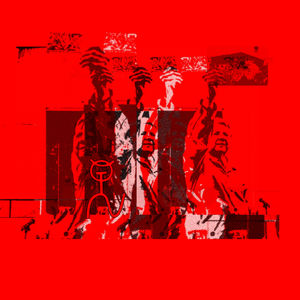Defence of dissertation in the field of Contemporary Art, MA David Muñoz Alcantara

When
Where
Event language(s)
Title of the doctoral thesis: Title of the doctoral thesis: Aesthetic Praxis In Translation. Introduction and Translation of Alberto Híjar Serrano's Work: Aesthetic Praxis
Opponent: Professor Carolina Rito, Coventry University, United Kingdom
Custos: Professor Mira Kallio-Tavin, Aalto University School of Arts, Design and Architecture, Department of Art
Defence is held remotely via Zoom: https://aalto.zoom.us/j/69809636143
Meeting ID: 698 0963 6143
Zoom Quick Guide: https://www.aalto.fi/en/services/zoom-quick-guide
The dissertation is publicly displayed online 10 days before the defence at:https://aaltodoc.aalto.fi/doc_public/eonly/riiputus/
Translation as Praxis.
As brief note to the lectio praecursoria by David Muñoz Alcántara
Aesthetic Praxis in Translation. | Introduction and Translation of Alberto Híjar Serrano’s: “Aesthetic Praxis. The Aesthetic Dimension of Liberation.”
Mobilizing urgent knowledge!
This work engages the elaboration of other-history, rebellious memory, avant-garde and revolutionary art, poetic language and experimental writing, dissentient semiotics, critical praxes and historical groundings, the actuality of scientific socialism, anti-colonial presents, morphology of collective futures, anti-capitalist praxes, and self-critique with concrete and speculative sensible irruptions for expanding collective forms of knowledge production within trans-geographic internationalist routes.
The present translation aims to enable the reception of an influential theoretical position, actual, urgent, and crucial not only for Latin America. It presents a glimpse to the broad intellectual, militant, and collective contributions of Alberto Híjar Serrano—and to Híjar’s effect. It is a short abridge to some of his theoretical routes and an invitation for engaging in further learning.
Alberto Híjar Serrano (MX, 1935) coordinated Curso de Arte Vivo [Living Art Course] from 1960-1980, for the practice of art critique not only in Mexico but also in Latin America, Europe, China, Cuba and the former Soviet Union. At the same time, he produced several programs at the TV and radio channel of Universidad Nacional Autónoma de México–UNAM. He was involved in the organization of Autogobierno de Arquitectura [Self-government of Architecture] for the democratization of education at UNAM, where he coordinated the Postgraduate Department; and involved in the organization of Cogobierno [Co-government]—a student led opposition to neoliberal “developmentalism” and paternalistic indigenism–at the National School of Anthropology and History. In 1974, Híjar Serrano was kidnaped and tortured for political reasons, then accused of conspiracy and affiliation to the Fuerzas de Liberación Nacional–FLN [National Liberation Forces]. He was one of the founders of Taller de Arte e Ideología–TAI [Art and Ideology Workshop] at the Siqueiros Public Art Hall–SAPS, continuing the legacy of the communist painter David Alfaro Siqueiros. TAI was also established the Mexican Front of Cultural Workers. Híjar was part of the Sandinista Liberation Front–FLS, and proposed the formation of a Sandinista Cultural Workers Front. An active journalist since 1966 and was awarded at the XXX Anniversary of Academy of Sciences in Cuba.
Alberto Híjar Serrano, active reference in the Zapatista movement, in diverse commissions for justice and truth, in conceptual art collectives and post-structuralist theoretical groups, is a unique intellectual defying any simple classifications.
The coming publication is divided into two sections:
- The first section addresses the question of translation as praxis and its implications with militant research in the arts. It also pushes forward an irruption to individualized forms of knowledge production.
- The second section presents the first English language translation of Alberto Híjar Serrano’s: “Aesthetic Praxis. The Aesthetic Dimension of Liberation.” A selection compiled by Miguel Angel Esquivel and translated by David Muñoz Alcántara.
Both sections weave together translatability in aesthetics as the locus of class conflict, focusing on the internationalist routes of art to advance aesthetico-political resonances merged within the construction of people’s struggle for self-determination, i.e. poetics in the struggle for popular revolutionary autonomy. In detail, it addresses the revolutionary distinction in philosophy encountered at the scientific nature of Marxism through a non-reductive theory of conjuncture. It enters the concept of aesthetic dimension as a dimension of probable liberation, to specifically signal in art’s social character an aesthetic praxis. Further on, proposes an approximation to learn from Alberto Híjar Serrano as unavoidable resource to the complexity of aesthetic praxis addressed at the intersection of non-orthodox Marxisms and the mobilizing agency within the revolutionary trajectory of aesthetic knowledge, which Híjar’s work documents and triggers without simplification. The proposition is built on the Althusserian elaboration of “philosophy as class struggle in theory” in order to recognize “art as class struggle in the imagination” as Híjar remarks.
This introduction and translation contributes to foreground artistic-scientific knowledge, and to debate the sensible characterization of subjectivity in historical processes and socio-political dimensions. It remarks the binding of practice and theory that makes necessary to underline class struggle as the concrete site for the emergence of knowledge. It also demarcates a difference in methodology: militant methodology, as a position to contest inertia that dominates the academies of artistic research, and to point at contradictions of the ideological ramifications of education. It pushes aesthetics to grasp the politics of possibility in social transformation, underlining qualitative contributions of public and popular art for the restitution of life in collective becoming.